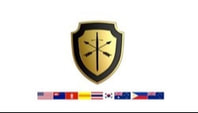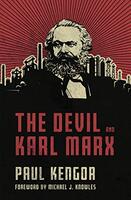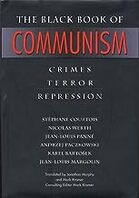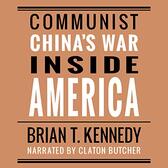- CAVWV
- Our Allies
- Special Projects
-
Events & Observances
- Independence Day
- Mental Health Awareness Month
- Memorial Day 2024
- Flag Day
- Vietnam Armed Forces Day
- Vietnam Summer Festival
- Gen. John Vessy Day 2023
- American Allies Day 2023
- SGU Veterans Commemoration Day
- POW / MIA / Genocide Rememberence Day
- Veterans Day
- Vietnamese New Year
- Genocide Remembrance Day
- CAVWV Veterans Day Commemoration
- Vietnam Veterans Day
- Vietnam "Black April" Day
- Featured Focus
- Contact Us
"The Communist War of Aggression in Southeast Asia"
First and Second Indochina Wars,
First and Second Indochina Wars,
Indochina wars, 20th-century conflicts in Vietnam, Laos, and Cambodia, with the principal involvement of France (1946–54) and later the United States (beginning in the 1950s). The wars are often called the French Indochina War and the Vietnam War (q.v.), or the First and Second Indochina wars. The latter conflict ended in April 1975.
In the latter half of the 19th century, Vietnam was gradually conquered by the French, who controlled it as a protectorate (1883–1939) and then as a possession (1939–45). Vietnamese rule did not return to the country until Sept. 2, 1945, when the Nationalist leader Ho Chi Minh proclaimed its independence. From 1946 to 1954, the French opposed independence, and Ho Chi Minh led guerrilla warfare against them in the first Indochina War that ended in the Vietnamese victory at Dien Bien Phu on May 7, 1954. An agreement was signed at Geneva on July 21, 1954, providing for a temporary division of the country, at the 17th parallel of latitude, between a communist-dominated north and a U.S.-supported south. Activities of procommunist rebels in South Vietnam led to heavy U.S. intervention in the mid-1960s and the Second Indochina War, or Vietnam War, which caused great destruction and loss of life. It came to a brief halt in 1973, when a cease-fire agreement was signed (January 27) and the remaining U.S. troops in South Vietnam began to be withdrawn. The war was soon resumed. In 1975 the South Vietnamese government collapsed and was replaced (April 30) by a regime dominated by the communists. On July 2, 1976, the two Vietnams were reunited as the Socialist Republic of Vietnam.
Cambodia
Cambodia had been a French protectorate since 1863 and achieved independence in 1953 under the leadership of Prince Norodom Sihanouk. Sihanouk adopted a position of neutrality in the Vietnam conflict and tacitly permitted Vietnamese communists to use sanctuaries inside Cambodia. On March 18, 1970, however, he was deposed in a coup by right-wing elements in the armed forces. On May 1, 1970, U.S. and South Vietnamese forces invaded Cambodia in an effort to destroy communist sanctuaries along the Cambodia-Vietnam border. Cambodia’s new leaders by then faced a growing threat from Cambodian communists called the Khmer Rouge (“Red Khmers”). The U.S. launched a series of intensive bombing raids of rural areas of Cambodia until 1973 in an effort to disrupt Khmer Rouge activities; but, after a five-year civil war, the Cambodian capital, Phnom Penh, fell to the Khmer Rouge on April 17, 1975. Vietnamese forces invaded Cambodia in January 1979 and installed a puppet government soon afterward.
Loas
Laos had been a French protectorate since the turn of the century. It achieved independence in a series of steps between 1946 and 1954. Control of the government changed hands between rightists and neutralists several times until 1962, when a coalition government between them and the Laotian communists called the Pathet Lao (“Lao Country”) was formed under the leadership of Prince Souvanna Phouma. The coalition continued to govern while communists and noncommunists vied for control of the outlying provinces of the country. After the fall of South Vietnam in 1975, the Pathet Lao, supported by the North Vietnamese, established control over the whole of Laos.
Vietnam
Vietnam became a subject of large-scale news coverage in the United States only after substantial numbers of U.S. combat troops had been committed to the war in the spring of 1965. Prior to that time, the number of American newsmen in Indochina had been small—fewer than two dozen even as late as 1964. By 1968, at the height of the war, there were about 600 accredited journalists of all nationalities in Vietnam, reporting for U.S. wire services, radio and television networks, and the major newspaper chains and news magazines. The U.S. Military Assistance Command, Vietnam (MACV) made military transportation readily available to newspeople, and some took advantage of this frequently to venture into the field and get their stories first-hand. That proximity to the battlefield carried obvious risks, and more than 60 journalists were killed during the war. Many reporters, however, spent most of their time in the South Vietnamese capital, Saigon (now Ho Chi Minh City), and got their stories from the Joint U.S. Public Affairs Office’s daily briefings (which soon became known as “the five o’clock follies”).
The Vietnam conflict is often referred to as the “first television war.” Film from Vietnam was flown to Tokyo for quick developing and editing and then flown on to the United States. Important stories could be transmitted directly by satellite from Tokyo. There has been much discussion of the way television brought battles directly to American living rooms, but in fact most television stories were filmed soon after a battle rather than in the midst of one, and many were simply conventional news stories. Indeed, most stories about the war on nightly TV news shows were not film records fresh from Vietnam but rather brief reports based on wire service dispatches and read by anchormen.
The role of the Media.
The role of the media in the Vietnam War is a subject of continuing controversy. Some believe that the media played a large role in the U.S. defeat. They argue that the media’s tendency toward negative reporting helped to undermine support for the war in the United States while its uncensored coverage provided valuable information to the enemy in Vietnam. However, many experts who have studied the role of the media have concluded that prior to 1968 most reporting was actually supportive of the U.S. effort in Vietnam. The February 1968 assessment by Walter Cronkite, the anchor of the CBS Evening News (known as “the most trusted man in America”), that the conflict was “mired in stalemate” was seen by many as the signal of a sea change in reporting about Vietnam, and it is said to have inspired Pres. Lyndon B. Johnson to state, “If I’ve lost Cronkite, I’ve lost Middle America.” The increasingly skeptical and pessimistic tone of reporting may have reflected rather than created similar feelings among the American public. Reporting from Vietnam was indeed uncensored, but during the entire war period there were only a handful of instances in which the MACV found a journalist guilty of violating military security. In any case, American disillusionment with the war was a product of many causes, of which the media was only one. What most undermined support for the war was simply the level of American casualties: the greater the increase in casualties, the lower the level of public support for the war.
Ronald H. Spector
Prisoner of war
On January 27, 1973, the Paris Peace Accords were signed, officially bringing to an end the American war in Vietnam. One of the prerequisites for and provisions of the accords was the return of all U.S. prisoners of war (POWs). On February 12 the first of 591 U.S. military and civilian POWs were released in Hanoi and flown directly to Clark Air Force Base in the Philippines. A year later, in the State of the Union address, Pres. Richard M. Nixon told the American people that “all our troops have returned from Southeast Asia—and they have returned with honor.”
At the same time, many Americans were starting to question whether in fact all POWs had been released. The Vietnam POW issue became a major controversy prompting congressional investigations, partisan politics, the production of major motion pictures (e.g., Uncommon Valor [1983], Rambo: First Blood Part II [1985]), and the formation of a number of POW organizations (e.g., the National League of POW/MIA Families). In a Wall Street Journal/NBC News poll taken in 1991, 69 percent of the American people believed that U.S. POWs were still being held in Indochina, and 52 percent had concluded that the government was derelict in not securing their release. The uproar over POWs caused the Senate to form the Select Committee on POW/MIA Affairs, chaired by Democrat John Kerry (a candidate for president in the 2004 election) and including several other veterans of the war, among them Republican John McCain (a candidate in the 2008 presidential election). The controversy was fed by reported live sightings and photographs of Americans held in captivity. Investigations revealed that the photographs were phony, and the sightings could not be verified. Indeed, no credible evidence was ever provided to substantiate the claim that American POWs continued to languish in Vietnam after the signing of the peace accords. Nevertheless, the POW issue remained significant.
The Vietnam POW/MIA issue is unique for a number of reasons. The Vietnam War was the first war the United States lost. As a consequence, after the war it was impossible for the United States to search the battlefields for remains of its dead and missing. Because North Vietnam was never occupied, it was impossible to search prisons and cemeteries there. In addition, North Vietnam shared a common border with the People’s Republic of China, and it had close ties with the Soviet Union; unknown numbers of POWs may have been taken to both of those countries. Finally, much of Vietnam is covered with dense jungle; the geography, terrain, and climate make it exceedingly difficult to find and recover remains. All of those factors damaged recovery efforts and precluded a comprehensive, accurate accounting. Nevertheless, on July 11, 1995, the United States extended diplomatic recognition to Vietnam—an act that gave Americans greater access to the country.
In 1973, when the POWs were released, roughly 2,500 servicemen were designated “missing in action” (MIA). As of 2015, more than 1,600 of those were still “unaccounted-for.” The Defense POW/MIA Accounting Agency (DPAA) of the U.S. Department of Defense lists 687 U.S. POWs as having returned alive from the Vietnam War. North Vietnam acknowledged that 55 American servicemen and 7 civilians died in captivity. During the war, POWs in Hanoi prisons endeavoured to maintain a registry of captive Americans; they concluded that at least 766 POWs entered the system. POWs were initially held in four prisons in Hanoi and six facilities within 50 miles (80 km) of the city. No POW ever escaped from Hanoi.
More than 80 percent of POWs held in North Vietnam were aircrew personnel of the U.S. Air Force (332 POWs), Navy (149 POWs), and Marine Corps (28 POWs). POWs held in North Vietnam were used for propaganda, psychological warfare, and negotiating purposes. They were tortured, isolated, and psychologically abused in violation of the Geneva Convention of 1949, to which North Vietnam was a signatory. Some POWs were paraded before reporters and foreign visitors and forced to confess to war crimes against the people of Vietnam. Others resisted torture and refused to comply. The Pentagon made no effort to court-martial those individuals who had cooperated with the enemy, with the exception of one marine who did not return to the United States until 1979. However, most POWs served with honour and dignity. In general, aviators were older and more mature, more highly trained, and better educated than the average soldier in Vietnam, and possibly as a consequence they fared much better in captivity. Army Special Forces Capt. Floyd James Thompson, who was captured on March 26, 1964, was the longest-held POW. Navy Lieut. Junior Grade Everett Alvarez, Jr., shot down on August 5, 1964, was the first pilot to be captured. Air Force Col. John Flynn was the highest-ranking POW.
Adrian R. Lewis
In the latter half of the 19th century, Vietnam was gradually conquered by the French, who controlled it as a protectorate (1883–1939) and then as a possession (1939–45). Vietnamese rule did not return to the country until Sept. 2, 1945, when the Nationalist leader Ho Chi Minh proclaimed its independence. From 1946 to 1954, the French opposed independence, and Ho Chi Minh led guerrilla warfare against them in the first Indochina War that ended in the Vietnamese victory at Dien Bien Phu on May 7, 1954. An agreement was signed at Geneva on July 21, 1954, providing for a temporary division of the country, at the 17th parallel of latitude, between a communist-dominated north and a U.S.-supported south. Activities of procommunist rebels in South Vietnam led to heavy U.S. intervention in the mid-1960s and the Second Indochina War, or Vietnam War, which caused great destruction and loss of life. It came to a brief halt in 1973, when a cease-fire agreement was signed (January 27) and the remaining U.S. troops in South Vietnam began to be withdrawn. The war was soon resumed. In 1975 the South Vietnamese government collapsed and was replaced (April 30) by a regime dominated by the communists. On July 2, 1976, the two Vietnams were reunited as the Socialist Republic of Vietnam.
Cambodia
Cambodia had been a French protectorate since 1863 and achieved independence in 1953 under the leadership of Prince Norodom Sihanouk. Sihanouk adopted a position of neutrality in the Vietnam conflict and tacitly permitted Vietnamese communists to use sanctuaries inside Cambodia. On March 18, 1970, however, he was deposed in a coup by right-wing elements in the armed forces. On May 1, 1970, U.S. and South Vietnamese forces invaded Cambodia in an effort to destroy communist sanctuaries along the Cambodia-Vietnam border. Cambodia’s new leaders by then faced a growing threat from Cambodian communists called the Khmer Rouge (“Red Khmers”). The U.S. launched a series of intensive bombing raids of rural areas of Cambodia until 1973 in an effort to disrupt Khmer Rouge activities; but, after a five-year civil war, the Cambodian capital, Phnom Penh, fell to the Khmer Rouge on April 17, 1975. Vietnamese forces invaded Cambodia in January 1979 and installed a puppet government soon afterward.
Loas
Laos had been a French protectorate since the turn of the century. It achieved independence in a series of steps between 1946 and 1954. Control of the government changed hands between rightists and neutralists several times until 1962, when a coalition government between them and the Laotian communists called the Pathet Lao (“Lao Country”) was formed under the leadership of Prince Souvanna Phouma. The coalition continued to govern while communists and noncommunists vied for control of the outlying provinces of the country. After the fall of South Vietnam in 1975, the Pathet Lao, supported by the North Vietnamese, established control over the whole of Laos.
Vietnam
Vietnam became a subject of large-scale news coverage in the United States only after substantial numbers of U.S. combat troops had been committed to the war in the spring of 1965. Prior to that time, the number of American newsmen in Indochina had been small—fewer than two dozen even as late as 1964. By 1968, at the height of the war, there were about 600 accredited journalists of all nationalities in Vietnam, reporting for U.S. wire services, radio and television networks, and the major newspaper chains and news magazines. The U.S. Military Assistance Command, Vietnam (MACV) made military transportation readily available to newspeople, and some took advantage of this frequently to venture into the field and get their stories first-hand. That proximity to the battlefield carried obvious risks, and more than 60 journalists were killed during the war. Many reporters, however, spent most of their time in the South Vietnamese capital, Saigon (now Ho Chi Minh City), and got their stories from the Joint U.S. Public Affairs Office’s daily briefings (which soon became known as “the five o’clock follies”).
The Vietnam conflict is often referred to as the “first television war.” Film from Vietnam was flown to Tokyo for quick developing and editing and then flown on to the United States. Important stories could be transmitted directly by satellite from Tokyo. There has been much discussion of the way television brought battles directly to American living rooms, but in fact most television stories were filmed soon after a battle rather than in the midst of one, and many were simply conventional news stories. Indeed, most stories about the war on nightly TV news shows were not film records fresh from Vietnam but rather brief reports based on wire service dispatches and read by anchormen.
The role of the Media.
The role of the media in the Vietnam War is a subject of continuing controversy. Some believe that the media played a large role in the U.S. defeat. They argue that the media’s tendency toward negative reporting helped to undermine support for the war in the United States while its uncensored coverage provided valuable information to the enemy in Vietnam. However, many experts who have studied the role of the media have concluded that prior to 1968 most reporting was actually supportive of the U.S. effort in Vietnam. The February 1968 assessment by Walter Cronkite, the anchor of the CBS Evening News (known as “the most trusted man in America”), that the conflict was “mired in stalemate” was seen by many as the signal of a sea change in reporting about Vietnam, and it is said to have inspired Pres. Lyndon B. Johnson to state, “If I’ve lost Cronkite, I’ve lost Middle America.” The increasingly skeptical and pessimistic tone of reporting may have reflected rather than created similar feelings among the American public. Reporting from Vietnam was indeed uncensored, but during the entire war period there were only a handful of instances in which the MACV found a journalist guilty of violating military security. In any case, American disillusionment with the war was a product of many causes, of which the media was only one. What most undermined support for the war was simply the level of American casualties: the greater the increase in casualties, the lower the level of public support for the war.
Ronald H. Spector
Prisoner of war
On January 27, 1973, the Paris Peace Accords were signed, officially bringing to an end the American war in Vietnam. One of the prerequisites for and provisions of the accords was the return of all U.S. prisoners of war (POWs). On February 12 the first of 591 U.S. military and civilian POWs were released in Hanoi and flown directly to Clark Air Force Base in the Philippines. A year later, in the State of the Union address, Pres. Richard M. Nixon told the American people that “all our troops have returned from Southeast Asia—and they have returned with honor.”
At the same time, many Americans were starting to question whether in fact all POWs had been released. The Vietnam POW issue became a major controversy prompting congressional investigations, partisan politics, the production of major motion pictures (e.g., Uncommon Valor [1983], Rambo: First Blood Part II [1985]), and the formation of a number of POW organizations (e.g., the National League of POW/MIA Families). In a Wall Street Journal/NBC News poll taken in 1991, 69 percent of the American people believed that U.S. POWs were still being held in Indochina, and 52 percent had concluded that the government was derelict in not securing their release. The uproar over POWs caused the Senate to form the Select Committee on POW/MIA Affairs, chaired by Democrat John Kerry (a candidate for president in the 2004 election) and including several other veterans of the war, among them Republican John McCain (a candidate in the 2008 presidential election). The controversy was fed by reported live sightings and photographs of Americans held in captivity. Investigations revealed that the photographs were phony, and the sightings could not be verified. Indeed, no credible evidence was ever provided to substantiate the claim that American POWs continued to languish in Vietnam after the signing of the peace accords. Nevertheless, the POW issue remained significant.
The Vietnam POW/MIA issue is unique for a number of reasons. The Vietnam War was the first war the United States lost. As a consequence, after the war it was impossible for the United States to search the battlefields for remains of its dead and missing. Because North Vietnam was never occupied, it was impossible to search prisons and cemeteries there. In addition, North Vietnam shared a common border with the People’s Republic of China, and it had close ties with the Soviet Union; unknown numbers of POWs may have been taken to both of those countries. Finally, much of Vietnam is covered with dense jungle; the geography, terrain, and climate make it exceedingly difficult to find and recover remains. All of those factors damaged recovery efforts and precluded a comprehensive, accurate accounting. Nevertheless, on July 11, 1995, the United States extended diplomatic recognition to Vietnam—an act that gave Americans greater access to the country.
In 1973, when the POWs were released, roughly 2,500 servicemen were designated “missing in action” (MIA). As of 2015, more than 1,600 of those were still “unaccounted-for.” The Defense POW/MIA Accounting Agency (DPAA) of the U.S. Department of Defense lists 687 U.S. POWs as having returned alive from the Vietnam War. North Vietnam acknowledged that 55 American servicemen and 7 civilians died in captivity. During the war, POWs in Hanoi prisons endeavoured to maintain a registry of captive Americans; they concluded that at least 766 POWs entered the system. POWs were initially held in four prisons in Hanoi and six facilities within 50 miles (80 km) of the city. No POW ever escaped from Hanoi.
More than 80 percent of POWs held in North Vietnam were aircrew personnel of the U.S. Air Force (332 POWs), Navy (149 POWs), and Marine Corps (28 POWs). POWs held in North Vietnam were used for propaganda, psychological warfare, and negotiating purposes. They were tortured, isolated, and psychologically abused in violation of the Geneva Convention of 1949, to which North Vietnam was a signatory. Some POWs were paraded before reporters and foreign visitors and forced to confess to war crimes against the people of Vietnam. Others resisted torture and refused to comply. The Pentagon made no effort to court-martial those individuals who had cooperated with the enemy, with the exception of one marine who did not return to the United States until 1979. However, most POWs served with honour and dignity. In general, aviators were older and more mature, more highly trained, and better educated than the average soldier in Vietnam, and possibly as a consequence they fared much better in captivity. Army Special Forces Capt. Floyd James Thompson, who was captured on March 26, 1964, was the longest-held POW. Navy Lieut. Junior Grade Everett Alvarez, Jr., shot down on August 5, 1964, was the first pilot to be captured. Air Force Col. John Flynn was the highest-ranking POW.
Adrian R. Lewis
TIMELINE COMMUNISM
Timeline History of Communism
|
The Americans called it the Vietnam War, the Communist North Vietnamese called it the American War but the Asians from Veitnam, Laos, Cambodia and Thailand and those who that lived every day during this time of conflict call it The Communist War of Aggression.
|
Film
Further Reading
|
THE DEVIL AND KARL MARX: Communism's Long march of Death, Deception & Infiltration - Paul Kengor https://www.amazon.com/Devil-Karl-Marx-Communisms-Infiltration-ebook/dp/B08FBP5H46/ref=sr_1_3?crid=36PHQBV1YLBMA&keywords=black+book+of+communism+kindle&qid=1693585460&s=audible&sprefix=black+book+of+com%2Caudible%2C119&sr=1-3
|
BLACK BOOK OF COMMUNISM: CRIMES, TERRO, REPRESSION: Jean-Louis Panne. https://www.amazon.com/Black-Book-Communism-Crimes-Repression/dp/0674076087/ref=rvi_sccl_3/138-7673433-8663726?pd_rd_w=uAuWj&content-id=amzn1.sym.f5690a4d-f2bb-45d9-9d1b-736fee412437&pf_rd_p=f5690a4d-f2bb-45d9-9d1b-736fee412437&pf_rd_r=K6SB29X52SYCEJV3YVAW&pd_rd_wg=DV3Mx&pd_rd_r=a81c58cd-f0c3-4441-82dc-7a2d75129192&pd_rd_i=0674076087&psc=1
|
|
AN IMMIGRANT'S LOVE LETTER TO THE WEST: Konstantin Kisin & Peter Lloyd. https://www.amazon.com/Immigrants-Love-Letter-West/dp/B09WBLJTTG/ref=sr_1_1?crid=24JYFIV3II4L0&keywords=konstantin+kisin&qid=1693585341&sprefix=kisin%2Caps%2C131&sr=8-1
|
COMMUNIST CHINA'S WAR INSIDE AMERICA: Broadside, Book 66: https://www.amazon.com/Communist-Chinas-War-Inside-America/dp/B0913JNVTS/ref=sr_1_4?crid=1VT5DM5GOFF6Q&keywords=black+book+of+communism&qid=1693585804&s=audible&sprefix=black+book+of+communism%2Caudible%2C117&sr=1-4
|





